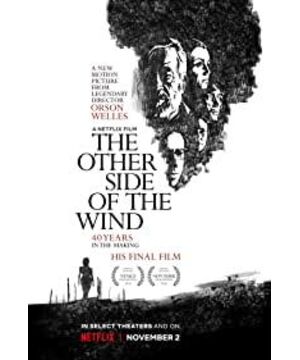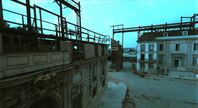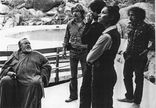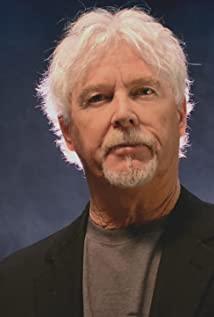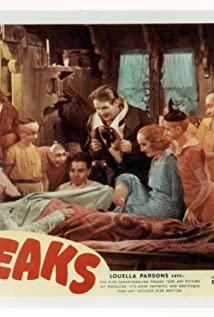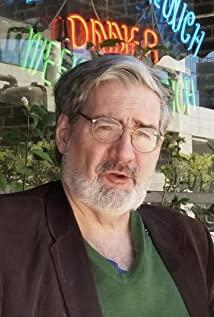2018.12.04 First time viewing
Before the official release, there were too many articles on the Internet touting the film's excellence. I watched it several times and still didn't finish it, but I already knew what the film was about.
Story: Probably an old director made an art film. First of all, he said that the director was highly respected and well-known. Then the crew made the movie together. Later, in the small screening room, the director invited a young producer to watch (maybe the starring actor?), and it was over after half the movie. Then start to play the film made by this director. Then the director invited a lot of people to watch the movie together. Halfway through, he wanted to replay the movie. The projectionist said "no", and then the audience talked about one sentence after another, which had nothing to do with the movie, like lace news. I didn't watch it later, sorry I can't watch it anymore, I'll watch it later.
Some of my personal opinions:
1. The editing is bad. The movement of the characters is unclear, and the environment is unclear, which almost completely breaks the "character perspective" that is commonly used in filming dialogues during regular editing. There are several scenes with multiplayer scenes, all of which are close-ups of the same color (there are very few close-ups). I didn't even understand the environment and orientation of this place. In a sentence from the director himself in the trailer, "this movie will use a frantic approach".
2. The color tone of each device is not uniform, and there is no color adjustment in the later stage. The tidbits introduced that the film was shot in various media, including 8mm, 16mm, color and black and white, as well as tapes and video tapes. All mixed shooting was completed. Therefore, in order not to destroy the director's idea during post-production, the original colors were completely used without color grading, each picture could not be spliced together at all, and the viewpoints were always different, and the framing of some pictures was very strange.
3. Narrative jumps without logic. This is a bit similar to that "Room", but that one has no logic in the narrative, this one is that the story itself is a bit boring, but there is no sentence, maybe there is a lack of material in the middle, or is it intentional? Originally, the director and the young actors were watching the movie together, and then they skipped to the next scene. Unrelated to the previous scene, unrelated to the plot, it looks like a multi-line narrative, but it's not. Weird.
This is probably how I feel now, I will continue to read it, and maybe it will change after reading it.
2019.08.04 Second viewing
I woke up early today and didn't doze off. I just want to watch this movie again while I'm at my best. This time I probably understood 50% of it. This movie is very strange, somewhere between a biopic and a non-biographical film, with Wells' own experiences and insights, but not a pure biopic.
The film revolves around director Jack Hannaford, who screens his new film "The Other Side of the Wind" on a private small farm. Many reporters will be there to watch. Before the screening, I was chatting with reporters, some or not, and at the same time, he almost summed up his life course. After seeing half of it, he went to another drive-in movie theater to watch it. During this process, I kept talking about the starring John Dale, who left before the film was finished. He's the only character who's talked about the whole movie but doesn't show up (audiences talk about him, he's in the show, he's not at the screening), until at the end when everyone leaves the farm, he goes There, met Hannaford at the door.
The other part of this film is the in-film "The Other Side of the Wind". These two films are 2 extremes. The big movie as a whole is a talkative film, and the middle part hardly speaks. Except for the voice-over of the director of a nude sex scene in the middle, the actors in the film do not speak at all (even if they do, I have no impression at all). Another interesting phenomenon is that the male and female protagonists in the film did not speak after they arrived at the screening site. The female protagonist has a little more drama. In the film, there is a clip of Hannaford giving her a piece of Indian bone. closeup of her. Looking at the whole film, it can be said that this extreme is also an effect that the director needs, and it is not clear what he wants to express.
Personally, I think there are two problems with this movie. One is color grading. The whole film was shot with a variety of different equipment, so the tones are not uniform. This may not be the effect Wells wanted. At least in some places, a certain editing logic can be clearly seen but the colors are not uniform. Unity feels very messy. For example, in a 1 hour and 50 minute conversation between two people, this group of black and white shots should be the same group of pictures and should be adjusted to the same color. Different machines are shooting.
2 is editing, I personally feel that the editing rhythm is not well mastered. The rhythm in the movie is fast and slow, perhaps intentionally. But the more you see the back, the more you can feel the climaxes, especially the last scene forms the climax of the whole film (the part where the heroine walks in the desert), but the editing still does not achieve the climax effect, it feels too much Ping, this paragraph shouldn't be so smooth, it should be a little more climax to appear direct.
View more about The Other Side of the Wind reviews


